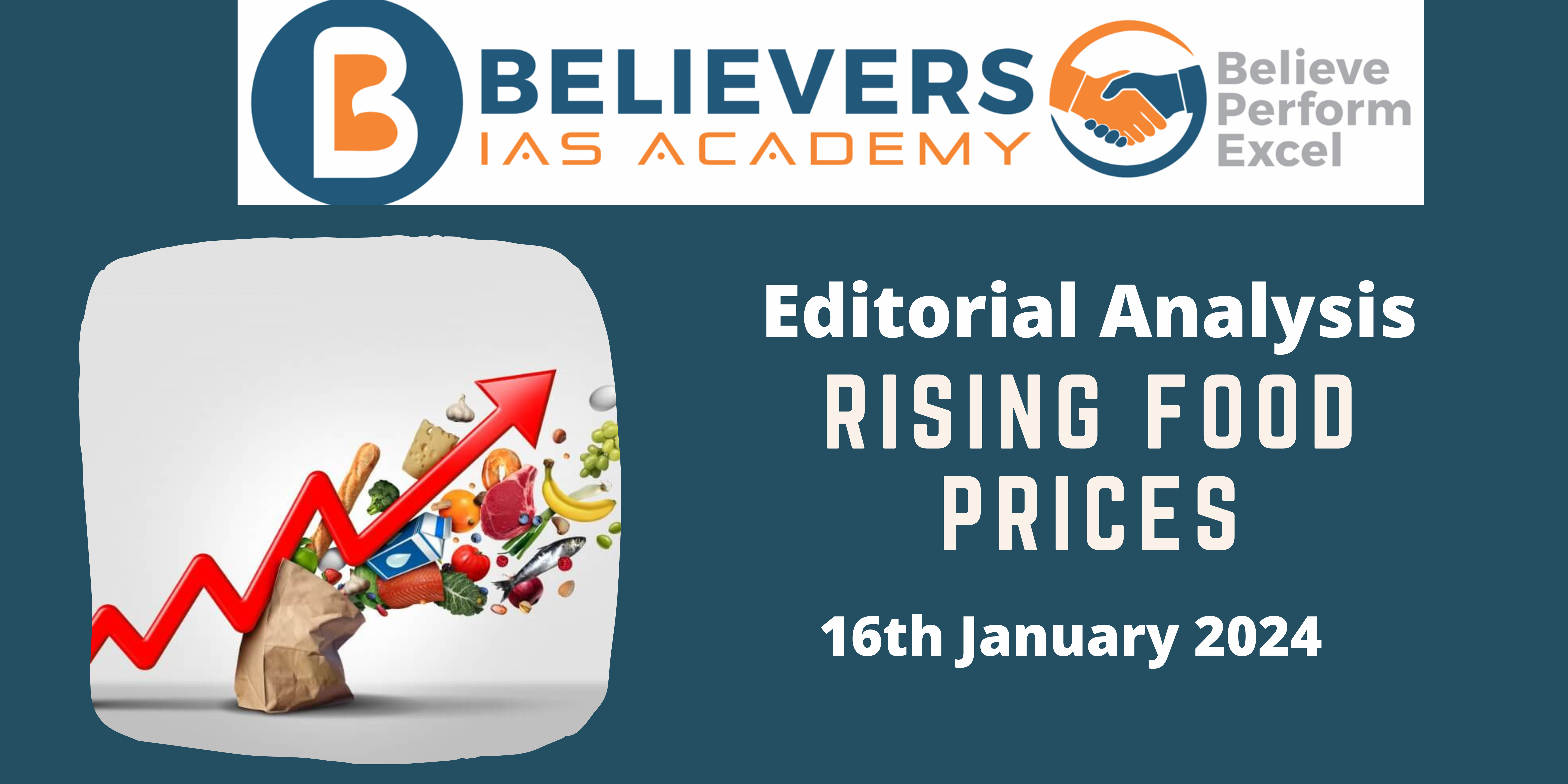Rising food prices
Context:
Rising food prices, particularly cereals and pulses, have led to an upswing in inflation measured by the Consumer Price Index, posing a threat to already fragile consumption patterns. This article explores the implications of escalating food prices, emphasizing the potential impact on households and the broader economy.
Relevance:
GS-03 (Economy)
Mains Question:
Examine the implications of rising food prices on household consumption and the broader economy. Discuss potential policy measures to address the challenges posed by inflation in essential commodities, emphasizing the significance of a balanced approach for sustainable economic growth. (250 words)
Consumer Price Index (CPI):
- Definition: The Consumer Price Index (CPI) serves as a vital measure, quantifying changes in the price levels of goods and services acquired by households. This numerical estimation, derived from representative sample objects, is periodically gathered to reflect the evolving economic landscape.
- CPI vs. WPI: Distinguishing itself from the Wholesale Price Index (WPI), which assesses producer-level price changes, the CPI focuses on consumer-level price variations. It captures shifts in service costs, which mostly is overlooked by the WPI.
- Types of CPI in India: India calculates CPI in four distinct forms, each tailored to different population segments. Compiled by the Ministry of Statistics and Program Implementation and the Labor Bureau under the Ministry of Labour, these types include-
- CPI for Industrial Workers
- CPI for Urban Non-Manual Employees
- CPI for Agricultural Labourers
- CPI for Rural Labourers.
- Advantages: CPI holds paramount significance as a macroeconomic indicator, aiding policymakers in monitoring price stability and formulating economic policies. The advantages include its accuracy, comparability across various parameters, and its role in policy formulation and cost-of-living adjustments.
- Calculation: CPI is computed concerning a base year, with the price change calculated by dividing the current year’s set price by the base year’s set price, then multiplied by 100. This process ensures an accurate representation of pure price changes.
- Shift from WPI to CPI: The choice of CPI over WPI in India, since 2014, was driven by CPI’s ability to reflect consumer prices accurately, encompass essential services, and better represent actual costs and spending patterns. This shift enhances the precision of inflation indicators for policymaking and economic analysis.
Dimensions of the Article:
- Inflationary Trends and Cereal Surge
- Vegetable Price Volatility
- Impact on Consumption and Economic Momentum
- Steps to Overcome
Inflationary Trends and Cereal Surge:
- In December, Consumer Price Index-based inflation witnessed a predictable increase, reaching a four-month high of 5.69%.
- The primary driver of this surge was the acceleration in food prices, notably cereals, constituting a substantial part of the ‘food and beverages’ category. Cereals, including staples like rice and wheat, recorded an inflation rate of 9.93%, presenting a concerning trend for households.
- The persistent inflation in this crucial sub-group, even if marginally slower than November, raises alarms, especially for those grappling with economic uncertainty.
Vegetable Price Volatility:
- Year-on-year inflation in vegetable prices surged by almost 10 percentage points, reaching a five-month high of 27.6%.
- Tomatoes and onions led this charge, with prices soaring by 33% and 74%, respectively, compared to December 2022. However, the inherent volatility in vegetable prices was evident as sequential deflation occurred.
- Despite a month-on-month deflation of 5.3%, potatoes, onions, and tomatoes still contracted by 5.9%, 16%, and 9.4%, respectively, from November. The overall scenario poses challenges for policymakers grappling with the task of curbing food-price inflation.
Impact on Consumption and Economic Momentum:
- This sustained increase underscores the difficulty policymakers face in containing food-price inflation.
- The rising cost of food may compel households to allocate larger portions of their incomes to meet basic needs, potentially disrupting an already feeble consumption pattern. This, in turn, poses a significant risk to the broader growth momentum of the economy.
Steps to Overcome:
- To overcome these challenges, policymakers need to consider comprehensive measures such as increasing agricultural productivity, addressing supply chain issues, and promoting sustainable farming practices.
- Additionally, targeted welfare programs for vulnerable populations can help mitigate the adverse effects of rising food prices on households.
Way Forward:
- A multi-pronged approach, including policy interventions to stabilize food prices, improve agricultural productivity, and fortify supply chains.
- Policymakers must strike a balance between ensuring food security and averting a detrimental impact on household budgets.
- Tackling the root causes of food-price inflation is paramount for sustained economic growth and the well-being of the population.




